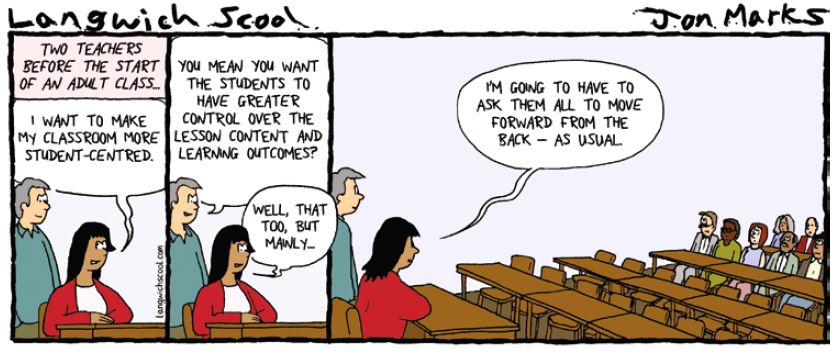Issue 104: encouraging active participation
If you don’t want your students to lurk silently at the back of the class like those pictured by Jon Marks in the Langwich Scool cartoon below, then you need to find ways to get them engaged and involved.
In our main feature, Beth Davies suggests that a degree of flexibility in lesson planning, which allows for exploitation of unforeseen events and unexpected student contributions, will help towards demonstrating to the students that their input is valued and respected, thereby encouraging them to join in more eagerly.
Getting his students to play an active role in drama lessons, to the extent of putting on a complete theatre production, is Michael McCarrell’s goal, whilst Scott Gross finds no difficulty in persuading his Vietnamese students to take part enthusiastically in jazz chants – this medium being one that complements their own cultural and educational ethos.
When it comes to teaching children, Handoyo Widodo and Arnis Silvia believe that students are never too young to participate in writing activities – as long as proper verbal and visual scaffolding is provided by the teacher. Laura Besley also has some ideas for getting children to write, encouraging their engagement in the activity by making it as much fun as possible. The motivation displayed by Katie Alaniz’s students, one of whom expresses a wish that they could ‘do this every day’, goes to show how digital storytelling can capture young imaginations and ensure full participation in class.
Nicky Hockly looks at how technology can enable even those students with physical or learning difficulties to take a full part in language lessons. And Russell Stannard recommends using online forums to get students engaged in discussions both inside and outside the classroom.
Active participation in learning is the key to success, so I hope you will find inspiration in this issue and ideas that you can use to make your students enthusiastic learners.



Comments
Write a Comment
Comment Submitted